Clip Art That Will Walk One Step at a Time
A Wellable Podcast episode talked nigh how health programs are becoming a must-have, every bit more than and more employees await their employer to provide wellness benefits equally role of their total rewards strategy. Unfortunately, there is a widely held conventionalities that only big companies with deep pockets can have a successful program. This is simply non true. Small companies can deliver a quality health plan on a tight budget, and this is because of a simple principle: practiced employee wellness programs are ones filled with 18-carat care and the want to help, not dollar bills. The goal of this blog mail is to provide the resource to launch an employee step challenge through a "do-it-yourself" approach. In one case leadership sees the results of a program, funding for wellness initiatives will be on the style! Formerly considered a "overnice perk," employee wellness programs, and their popular component, wellness challenges, are slowly condign a necessary and integral part of the modernistic piece of work environs. More companies are investing in wellness initiatives to keep their people healthy and physically active. In the constant battle against turnover and disengagement, companies should view employee health and loyalty as valuable resources, which can be earned and improved through wellness initiatives. A contempo survey found that employees who felt their employer-provided benefits positively affected their lives were more than 40% more likely to say they were loyal to their visitor. Yet, the notion still exists that you need to exist a large company with deep pockets to have a successful program. This is simply not true. Small companies can deliver a quality health programme on a tight budget considering good employee wellness programs are ones filled with genuine care and the desire to help. A big budget tin't help a health program come from the right identify. While a generous budget can provide the resources to run programs with minimal administrative brunt, managing a small plan for your office is definitely doable with some guidance and organization! And so allow's start with the nuts: what is a stride challenge? A step challenge is a plan, usually organized at work, where employees compete by taking steps throughout the twenty-four hours. In these programs, participants can compete with themselves past trying to striking personal or pre-established stride goals, compete confronting other individuals, and/or create teams to compete against other teams at their company. Regardless of the format, most step challenges should take a leaderboard (preferably real-fourth dimension or near-time) for participants to check their progress and ranking. To motivate participants, many organizers tie in a reward/incentive to the program. Some employers award the incentive based on participation in the programme and others do so by ranking on the leaderboard. This guide goes through the three core components of a pace program that an organizer will need to pay special attention to. These components tin also exist found in other challenges (such as nutrition or meditation challenges), so feel free to adapt this guide to your demand! Each section will exist total of tips, free templates, and good-to-knows. Feel free to reach out if you need additional information! This series is designed to help managers with a limited budget to kick kickoff an office walking challenge. There are multiple approaches to organizing one, and you can get creative with your method. Whatever method, regardless of the technology powering it, needs to be able to facilitate three dissimilar functions: (i) participant tracking, (ii) reporting and data aggregation, and (iii) leaderboard creation. These days, near people associate "step tracking" with a article of clothing device. To quantify the ubiquity of step tracking engineering, consider these survey results: 20% of Americans owns a habiliment device (40% for millennials) and some other 45% are thinking about purchasing ane inside the next yr (51% for millennials). It is very likely that a large portion of employees already own one or are considering getting one in the near future. Withal, although wearables are effective in tracking user move, they are certainly not the only tool available for facilitating walking challenges. Many smartphones accept accelerometers that are used by gratis mobile apps to automatically rail user steps. People who don't want to invest in a tracker tin can simply use one of these free apps to track their activity. Many smartphones already have free apps pre-installed on the phone to track steps, such as Apple Health for iPhone users and S Health for Samsung users. Since your participants are unable to manually count every step they take each day, they won't have many options outside of the ii mentioned above. If you lot foresee bug arising within your community in using these technologies, you may want to offering low-toll pedometers as a substitute. These devices are bachelor on Amazon for very affordable prices. Equally an alternative to counting steps, you tin can steer the program towards rewarding participation in grouping walking sessions. Try organizing three walking groups per day (in the morning before piece of work, during luncheon, and in the afternoon subsequently work), each for 15 to 30 minutes. Employees tin join in ane or more than sessions when it is convenient for them. Towards the end of each session, participants will receive a pocket-size stamp on the sign-upwards sheet to certificate their participation. The winners are those who clock the almost walking sessions during the challenge. Subsequently taking the necessary steps (no pun intended) to rail their activity, participants demand to written report the steps to the organizer. In that location are two options for participant reporting: (i) the Dinosaur Method and (ii) the Engineering Method. This method can be very inexpensive (if you don't count the indirect costs) since it does not involve working with or having to pay for a 3rd-political party. Additionally, it requires fiddling technical know-how, since you will be working by and large with a white lath and a marker or with spreadsheets, hence, the "Dinosaur" function. Hidden Costs Of Wellness Spreadsheets Starting time, you'd need to enquire participants to study their pace counts, miles, and/or duration of their walks. And so, you need to aggregate all data into a leaderboard. Stride counts are only the numbers indicated on a participant'south activity tracker (habiliment device, free mobile app, etc.). The altitude can be mapped using Google Maps or free websites like MapMyWalk, and a timer can be used to keep track of the duration. Afterwards, employees can submit this data into a survey tool, such as Google Class (gratis), Survey Monkey (costless or paid), or Typeform (free or paid). Depending on the volume of participation, restricted basic plans from Survey Monkey or Typeform may exist a sufficient option. Otherwise, Google Form is the best option to avoid acquiring additional costs. The interval for reporting is too an important factor. Every bit it is ideal to collect step counts for each day, participants would be required to to submit information on a daily basis. Still, employees could exist discouraged from participating past the trouble of recording data. Frequent reporting also means that the organizer has to find a mode to aggregate the information accurately and build the dashboard appropriately. The most user-friendly frequency for both participants and organizers is when the data is managed weekly. A sample schedule would be to remind your participants to enter their data every Fri forenoon, and then run a report and send out the leaderboard by the stop of the 24-hour interval, letting participants know their standing for the week. If you're going to offer prizes and, thus, need to make up one's mind winners (itisa claiming after all), going with this method volition not be very efficient. The accurateness of the result relies heavily on employees' honesty and no human mistake. Information technology may exist wise to implement some auditing measures to ensure data integrity. The activeness information reported past each user needs to be aggregated into one spreadsheet or unmarried document. To do this, Microsoft Excel or Google Sheets may be your all-time friend. If you assign each user with an unique ID in Excel at the beginning of the claiming, aggregating their step counts into one spreadsheet is simply a matter of mastering the VLOOKUP part. If you lot are not comfortable with Excel, fright non. Just download the free Wellable template, which includes all the necessary functions embedded into a unmarried Excel file. Simply follow the instructions on the get-go sheet and you are well on your style to organizing your challenge! From the aggregated data, you tin sort the participants by step count to class a leaderboard. If you want to get fancy, employ some conditional formatting to add some flare to the presentation. The Excel file provided in the the template automatically pulls the aggregated data into a squad leaderboard. You can share this leaderboard with participants by taking a screenshot and sharing information technology through email or the company intranet (more on communication in the second section). Because the social support and accountability may be a source of motivation for some people, more and more applications are allowing users to share their statistics with friends and family unit, even with strangers! Some platforms take one step farther to gamify the experience by edifice in some "friendly contest" by organizing results in a ranking format. Y'all can leverage these social features to create your own program leaderboard without having to hire a third-party vendor or manage spreadsheets. Get-go, you'd need to take all participants synchronize their health data to a single platform that can track steps from a device or a phone like Fitbit. The free Fitbit app can serve every bit an activity tracker so users without a Fitbit device can participate. Past doing this, users will all be tracking their steps automatically and can join a claiming or get "friends" with other participants on the app, which volition assign them to a leaderboard. You will not be able to create a team leaderboard with this option. With this method, participants will benefit from automated tracking and employers do good from existent-time, hassle-gratis leaderboards. However, there are multiple downsides to this approach: Pro Tip: the organizer can create a new business relationship, add only the challenge participants as friends, and take screenshots of the leaderboard each day to share with participants in an email thread. Companies with a budget to work with can look into 3rd-party vendors. With this option, employees will need to go through a one-time setup to connect their apps or devices with the platform, and the provider volition accept care of the residuum. All relevant data, such as step, distance, and duration, will automatically sync with the platform. Managers will then have access to a dashboard to see how participants are doing, too equally analytics to measure the success of the programme. With higher quality vendors, employers volition take greater flexibility to customize programs. Bring Your Own Technology (BYOT) ,in the walking claiming context, allows people to participate using their tracking technology (app or device) of choice. As a company, you don't take to put out a significant investment to bulk-buy devices, since employees volition exist bringing their ain trackers or smartphones. There are many devices and applications on the market, each with their ain user interface, design, and functionality. For example, a Fitbit Flex might be a good option for those who are just starting out and don't need many sport-specific features, while more serious athletes might prefer to go with Garmin watches that focus on operation. Similarly, in a diverse workplace, no two people take the same need or goal, then it's not imperative that every participant uses the same exact device. If people are forced to utilize a device that doesn't resonate with them, they are much more probable to throw their easily in the air and say, "I requite upwardly!" By encouraging employees to explore and bring in the technology that they're virtually comfortable with, you lot are setting the program up for success. Participants don't have to shell the learning curve of being introduced to a new form of technology. The focus is then shifted abroad from getting accustomed to a foreign device and directed towards developing ameliorate habits. In one case everybody has a tracking technology in place, there are multiple means you can aggregate the information to make a leaderboard. While it might sound out-of-reach, working with vendors is not as expensive as you might recollect! Most programs have a stock-still authoritative fee and a variable portion based on the number of users. When this upwards-front toll is compared to the indirect fees of the Dinosaur method, the deviation can be minimal. While program coordinators will all the same need to put in the hours to manage a programme, the amount of fourth dimension needed will be significantly less. Too, most vendors optimize the user experience to save participants as much time equally possible. It is of import that to choose a platform that can pull in statistics from multiple devices and apps. Since BYOT is the focus, the platform needs to be able to adjust all technology choices that your employees may make. Nearly platforms will automatically generate a leaderboard for participants to cheque their ranking in real-fourth dimension. This eliminates the need for the organizer to distribute the leaderboard manually. Some vendors have defended account managers to aid with designing new challenges, creating content for distribution, and troubleshooting any technical bug that users might have. This takes a lot off of the manager's plate, allowing them to focus on wellness programs that a third-party cannot assist with building. Communication is crucial for whatsoever successful wellness challenge, yet it is often overlooked. If you want employees to cleave out time from their already busy schedules to join the plan, you lot demand to be able to communicate the benefits of participation in an engaging and enticing style - go far and so attractive they cannot say no. Essential? Yes. But it is no easy feat. Planning and executing effective communications is fourth dimension-consuming. A thorough guide on this topic would call for an entire eBook. To get you started, this article includes the most important aspects of effective communication for employee wellness programs, too as some brilliant (FREE) tools you can utilize to improve communications. Similar many aspects of life, wellness program communications benefit from being planned out well before they are sent. The easiest manner to achieve this is past creating an editorial agenda for communications. Yes, this is the editorial agenda that many marketers are using. In fact, y'all should put on a marketing hat and arroyo recruitment for your visitor's wellness programme the same fashion y'all'd "sell" to a customer. That's how convincing your messages have to be if you want to grab employees' attention. Later on all, the boilerplate person receives around 124 emails in their inbox on any given twenty-four hour period, and every single 1 of them is direct competing with your email for attending. Planning out communications in accelerate will amend comprehension and relevance, making employees more receptive to the subsequent messages you send out. Yous should include every communication related to the challenge, including: Each message, regardless of its distribution channel, should be aggregated in 1 document (agenda) with its relevant information. The post-obit column headers arerecommended . Planning out these details beforehand will facilitate seeing the big movie and provide you with an actionable plan to follow. Additionally, having ample time between the due date and the publish date will allow enough time for crafting creative and engaging messages, avoiding the panic of last-minute writing from robbing you lot of your creative juice! Below is an example of how you can create your own communication calendar. The nearly useful tool for creating a communications calendar is the good ol' spreadsheet (plus, it's gratis!). Hither's a template to become y'all started, simply don't be shy about changing it upwards and customizing it for your needs! If you have a co-organizer (and you should - administering a challenge tin can be a lot of work!), utilize Google Sheets to collaborate in real-time. With the amount of emails your employees receive, none of them need some other generic "Hey there" greeting. Luckily, tools like MailChimp makes personalization surprisingly easy. Once you lot've imported participants' information (proper name, email, etc.), you'll take the choice to ship out emails that accost people past their first name. Studies have shown that emails with the recipient's offset proper noun in the subject lines have higher open up rates. Over again, this is where the research on basic marketing can help tremendously with health communication. You can personalize it further by segmenting email recipients. For example, you can send an additional reminder to people who did not open your email or sign up for the claiming. This manner, there'south no redundancy, and people don't go bombarded with irrelevant emails. MailChimp's free version supports up to ii,000 subscribers and 12,000 emails per month. This capacity should be more than enough to back up a pocket-size-scale claiming. Anything bigger will prove to be excessively complicated, at which point yous should rely on professional service to ensure the best experience for your employees. When coordinating a claiming, you should send out educational materials to increase appointment and retention while as well maximizing employees' adoption of salubrious behaviors. For instance, if you lot're organizing a walking challenge, collect and distribute information on the benefits of walking, the health risks of prolonged inactivity and sitting, etc. Below is an case infographic, created by the International Sports & Culture Association's Entrada for the Become Europe Moving campaign. Whatever information you decide to publish, use trusted and reliable sources. Luckily, you lot don't need admission to expensive publications to get factual information. There are complimentary and trusted sources out there you lot tin can count on. A few of our favorites are: As a rule of thumb, below is a quick guide to help approximate the legitimacy of sources (adapted from John Hopkins Medicine'south website). If yous've been on social media at all, yous take likely noticed the domination of graphics across all channels. Media like infographics, curt videos, and pictures deliver information in a quick and engaging way. "But I don't accept a graphic designer to deal with that!" Well, yous don't demand one. With the tools available online, creating graphics is quicker and more painless than it's e'er been. For instance, an infographic tin be created in half an hr (or less) on platforms similar Canva or Venngage. Even better, they have an extensive library of templates that you tin can employ - no feel in design needed! Both Canva and Venngage have free versions that you lot tin can trial. Canva's model is pay-as-you-go, meaning that you only pay for the specific premium add-on yous want to put in your design (bank check out their tutorial page for pattern inspirations!). Venngage is free to create and share on social media. It requires a paid (merely affordable) subscription that will give you access to more advanced templates and allow you to download visuals. If yous want to run repeating challenges, communicating the success of previous ones can exist a groovy selling point to recruit more participants! Hopefully, your challenge will generate a lot of buzz the first time around, and participants volition eagerly recruit their colleagues to bring together time to come programs. To make the evangelists' work easier, below are some creative things you tin can practice. Rewards are important for several reasons. First, having something to work towards can be a significant incentive for employees to join. Critics argue that sustainable behavior changes come from intrinsic motivation, and providing external rewards might not be plenty for participants to maintain their habits after finishing the programme. This is a reasonable position, as there are merits to the statement. However, some people just need a picayune push. They could be entirely happy with their lifestyle and would not fifty-fifty give wellness habits a attempt. In these cases, giving employees the incentive to stay good for you and enticing them to participate in a wellness program for a prize acts as a bridge from the couch to a 5K, from McDonald's to a salad. Some other important question that program organizers need to ask themselves is: Who am I trying to assistance? Most of the time, the target participants are not the ones who are already active and eat healthily. These employees, regardless of workplace involvement, will continue their wellness habits with or without an employee wellness plan. Those who are less health-conscious are typically those who need the external motivation. These employees volition benefit from wellness programs and challenges the most. That said, companies with smaller budgets take to be mindful nearly the toll, as healthy goodies are often attached to hefty price tags. Activity trackers can be priced at over a hundred dollar apiece, and other health subscriptions, when purchasing in bulk, tin can price a small fortune. On the other finish of the spectrum, getting $20 souvenir cards might not act every bit big enough incentive for people to join. The best solution falls somewhere in the center: a reward that is meaningful, attractive, even so affordable for the organizer. Below are three of our favorite affordable rewards. Public recognition is a powerful way to motivate employees, especially in certain work environments. While it typically goes with other perks such as gift cards or goodies, the recognition on its own can be a good showtime. Beneath are the fastest (and easiest) means to recognize outstanding participants. Be sure to get in articulate why the person is existence recognized; did she walk the distance between Boston to New York? Did he climb Mt. Everest? Whatever information technology is, highlight the achievements of the winners. In that location is, however, a potential drawback: as attractive as public recognition is, some people might not like to be put in the spotlight. You can avoid making them feel uncomfortable past clearly communicating your intention to publicly recognize the winners beforehand and encouraging people to come to you lot if they have any concerns. Who doesn't desire an extra day off to unwind and relax? If y'all can afford information technology, offer additional paid vacation days every bit the prize to the winner. It has been shown that employees who take a suspension from work come back with improved productivity and reduced burnout. Therefore, not only will y'all motivate employees to create salubrious physical habits (in the case of a walking challenge), you will also enable the winner(due south) to relax mentally. Understandably then, not all organizations tin can beget to provide extra paid holiday days, especially pocket-size businesses. In this case, allowing employees to piece of work from home (or remotely) can be a good alternative, especially if the work can be done anywhere. This flexibility is actually becoming more crucial to workers. Co-ordinate to a Gallup report on the State of the American Workplace, "51% of employees said that they would change jobs for one that offered them flextime, and 37% would practice the same for a job that offered them the power to work wherever they want at to the lowest degree part of the time." Ideally, you should consider offering flextime or telecommuting to near employees if the situation allows. Regardless, using this perk as a reward for the winner in the short run tin drive significant engagement. Q: How do Goggle box shows offer big-ticket prizes to winners without having to pay for the expensive rewards themselves? A: They partner up with brands that want to advertise their products or services to provide the best rewards while keeping the toll low. The good news is that y'all can re-create this formula and go nifty rewards for program participants too. Many local businesses would love the gratuitous exposure and would be willing to give a discounted/free prizes to winners. Reach out to gyms, yoga studios, movie theaters, and even local healthy restaurants and ask if they would be willing to contribute to your "gift basket." To pull this off, you lot will need to prove these businesses that you're prepared to go out of your way to promote their products (either by flyers, shout-outs, press releases, social media blasts, etc.). If you become the buy-in, you lot can put together a fabled gift basket for participants while helping your local businesses grow,which is a win-win for all parties involved. There's a rule-of-pollex to follow when you get this route: simply promote products or services that you would feel comfortable using yourself (e.one thousand., don't give out fat-burner pills if you are skeptical most the chemicals that go into them). Every partnership that you lot make reflects on the company. If you lot choose a concern with bad practices or 1 that is known for disrupting the community, you risk harm to your organization's brand and reputation. Costless support is enticing, but don't forget to practice due diligence to ensure that you're just associated with positive brands. Navigating the dynamic globe of technology is difficult, and it may seem impossible proceed upwardly with the rapid changing trends. However, here's a reassuring thought: while technologies tin be a great tool and make life much easier, independently, they are not the solution. The existent answer, as it turns out, is to create a strong culture that values health and well-existence. Luckily, in near cases, this can be hands achieved if information technology becomes an organizational priority. Employee wellness is condign increasingly vital, merely it does not have to be a financial burden. If yous effectively use your fourth dimension and resources, y'all tin can organize and administer the challenges yourself. However, if you desire some extra assistance, don't hesitate to reach out to your friends at Wellable on social media or through the website! Overview


Step Tracking And Creating Leaderboards
Participant Tracking
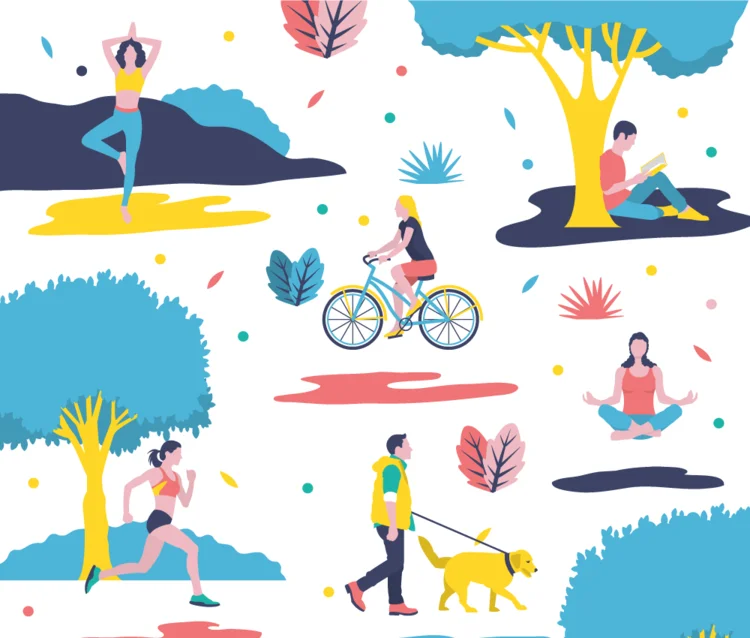
Reporting, Data Assemblage, And Leaderboard Creation
1. Dinosaur Method
a. Reporting
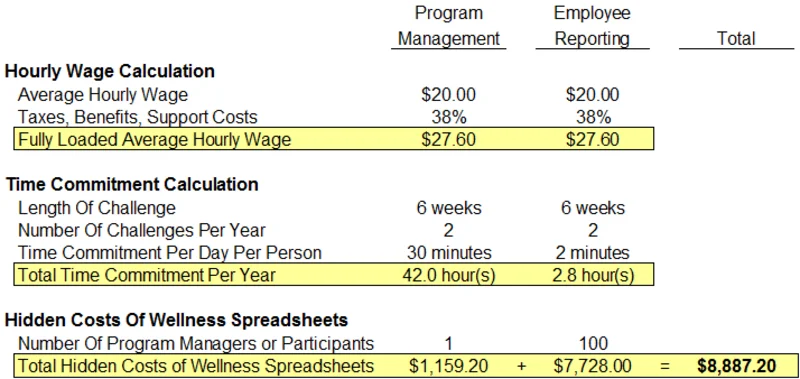
Word Of Caution
b. Data Aggregation And Leaderboard Creation
2. Utilizing Free Technology
a. Reporting
b. Data Aggregation And Leaderboard Creation
3. Connect To A Platform Provider (Bring Your Ain Technology)
a. Reporting
b. Data Assemblage And Leaderboard Creation
Why BYOT?
four. Realizing That DIY Is Not Your Matter?

Organizing Engaging Communications

1. Organization
What should I include in my agenda?
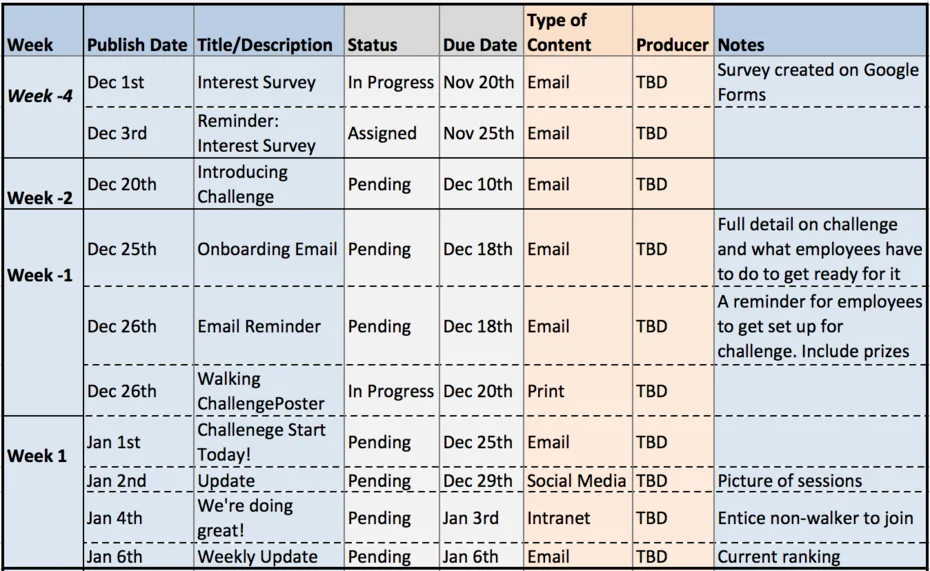
2. Personalization
3. Health Tips
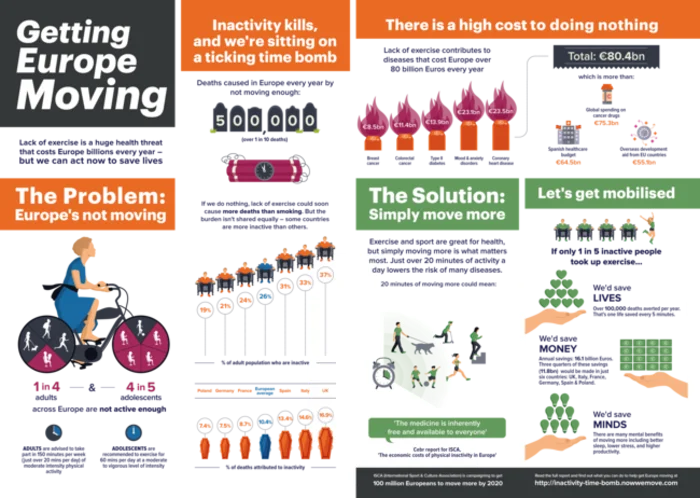
4. Become Artistic
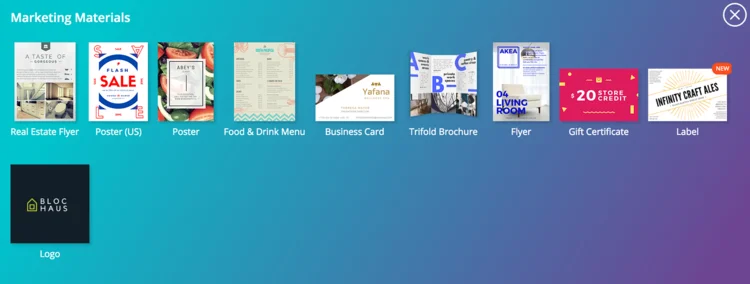
Choosing Motivating Rewards
1. Public Recognition
ii. Extra Vacation Day

3. Freebies From Community Partners
Conclusion

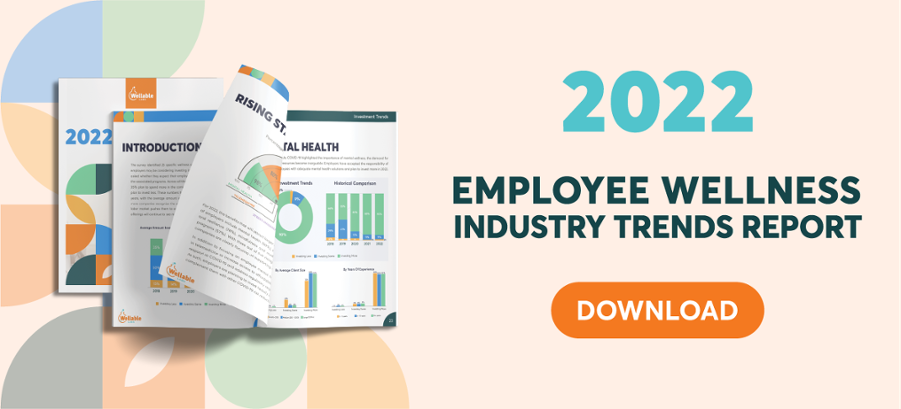
goldsteinvatte2000.blogspot.com
Source: https://blog.wellable.co/setting-up-a-step-challenge
0 Response to "Clip Art That Will Walk One Step at a Time"
Post a Comment